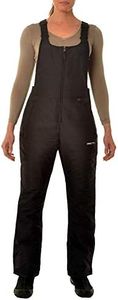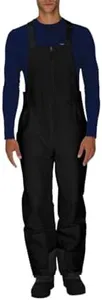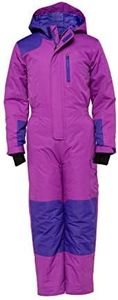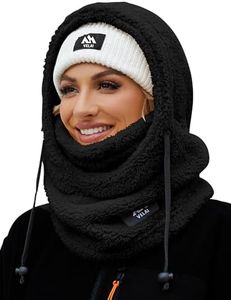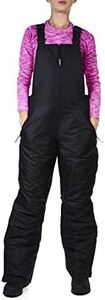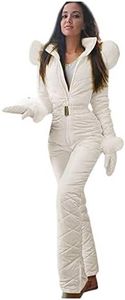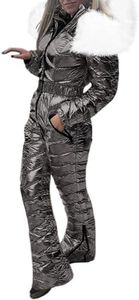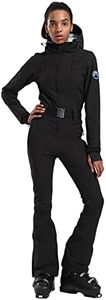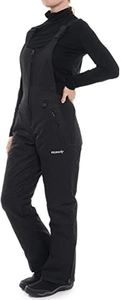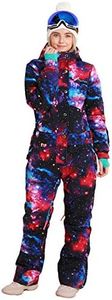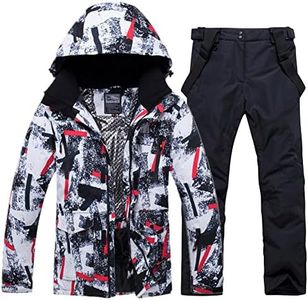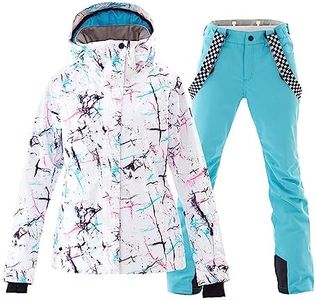We Use CookiesWe use cookies to enhance the security, performance,
functionality and for analytical and promotional activities. By continuing to browse this site you
are agreeing to our privacy policy
10 Best Ski Suits 2025 in the United States
How do we rank products for you?
Our technology thoroughly searches through the online shopping world, reviewing hundreds of sites. We then process and analyze this information, updating in real-time to bring you the latest top-rated products. This way, you always get the best and most current options available.

Buying Guide for the Best Ski Suits
Choosing the right ski suit is essential for ensuring comfort, warmth, and protection while enjoying your time on the slopes. A good ski suit will keep you dry, regulate your body temperature, and allow for freedom of movement. When selecting a ski suit, consider the following key specifications to find the best fit for your needs.Waterproof RatingThe waterproof rating of a ski suit indicates how well it can keep water out. This is important because staying dry is crucial for maintaining warmth and comfort. Waterproof ratings are measured in millimeters (mm) and typically range from 5,000mm to 20,000mm or more. For light snow and occasional falls, a rating of 5,000mm to 10,000mm may suffice. For wetter conditions or heavy snowfall, look for ratings of 15,000mm or higher. Choose a rating based on the typical weather conditions you'll be skiing in.
BreathabilityBreathability measures how well a ski suit allows moisture from sweat to escape. This is important to prevent overheating and to keep you dry from the inside. Breathability is measured in grams (g) and typically ranges from 5,000g to 20,000g. For less intense skiing or colder conditions, a lower breathability rating (5,000g to 10,000g) may be sufficient. For more intense activities or warmer conditions, look for higher ratings (15,000g to 20,000g). Consider your activity level and the climate when choosing the right breathability.
InsulationInsulation in a ski suit helps to keep you warm by trapping body heat. This is important for maintaining comfort in cold weather. Insulation can be synthetic or down, with synthetic being more common in ski suits due to its ability to retain warmth even when wet. The amount of insulation is measured in grams per square meter (g/m²). Light insulation (40g to 80g) is suitable for milder conditions or if you tend to run warm. Medium insulation (80g to 120g) is good for most conditions, while heavy insulation (120g and above) is best for very cold weather. Choose insulation based on your personal warmth needs and the typical temperatures you'll encounter.
Fit and MobilityThe fit of a ski suit affects your comfort and range of motion. This is important for ensuring you can move freely and perform well on the slopes. Ski suits come in various fits, from slim to regular to relaxed. A slim fit offers a more tailored look and may be preferred by those who prioritize style and aerodynamics. A regular fit provides a balance between comfort and mobility, suitable for most skiers. A relaxed fit offers more room for layering and is ideal for those who prioritize comfort and warmth. Consider your skiing style and preference for layering when choosing the fit.
Seam SealingSeam sealing refers to the process of sealing the seams of a ski suit to prevent water from entering. This is important for maintaining waterproofness. There are two main types of seam sealing: critically taped seams and fully taped seams. Critically taped seams are sealed in the most vulnerable areas, such as the shoulders and hood, and are suitable for less extreme conditions. Fully taped seams are sealed throughout the entire suit and offer maximum protection against water, ideal for wet and snowy conditions. Choose the level of seam sealing based on the conditions you'll be skiing in.
VentilationVentilation features, such as zippered vents, allow you to regulate your body temperature by letting excess heat escape. This is important for preventing overheating during intense activities. Look for ski suits with vents in key areas, such as under the arms or along the thighs. If you tend to get hot easily or plan to engage in high-intensity skiing, choose a suit with ample ventilation options. If you prefer a warmer suit or will be skiing in colder conditions, ventilation may be less of a priority.
Pockets and StoragePockets and storage options in a ski suit provide convenient places to store essentials like your phone, wallet, and snacks. This is important for keeping your items secure and easily accessible. Look for suits with a variety of pocket types, such as chest pockets, hand pockets, and internal pockets. Consider how much storage you need based on what you plan to carry with you on the slopes. If you like to have many items on hand, choose a suit with multiple pockets. If you prefer to travel light, fewer pockets may be sufficient.
Most Popular Categories Right Now


